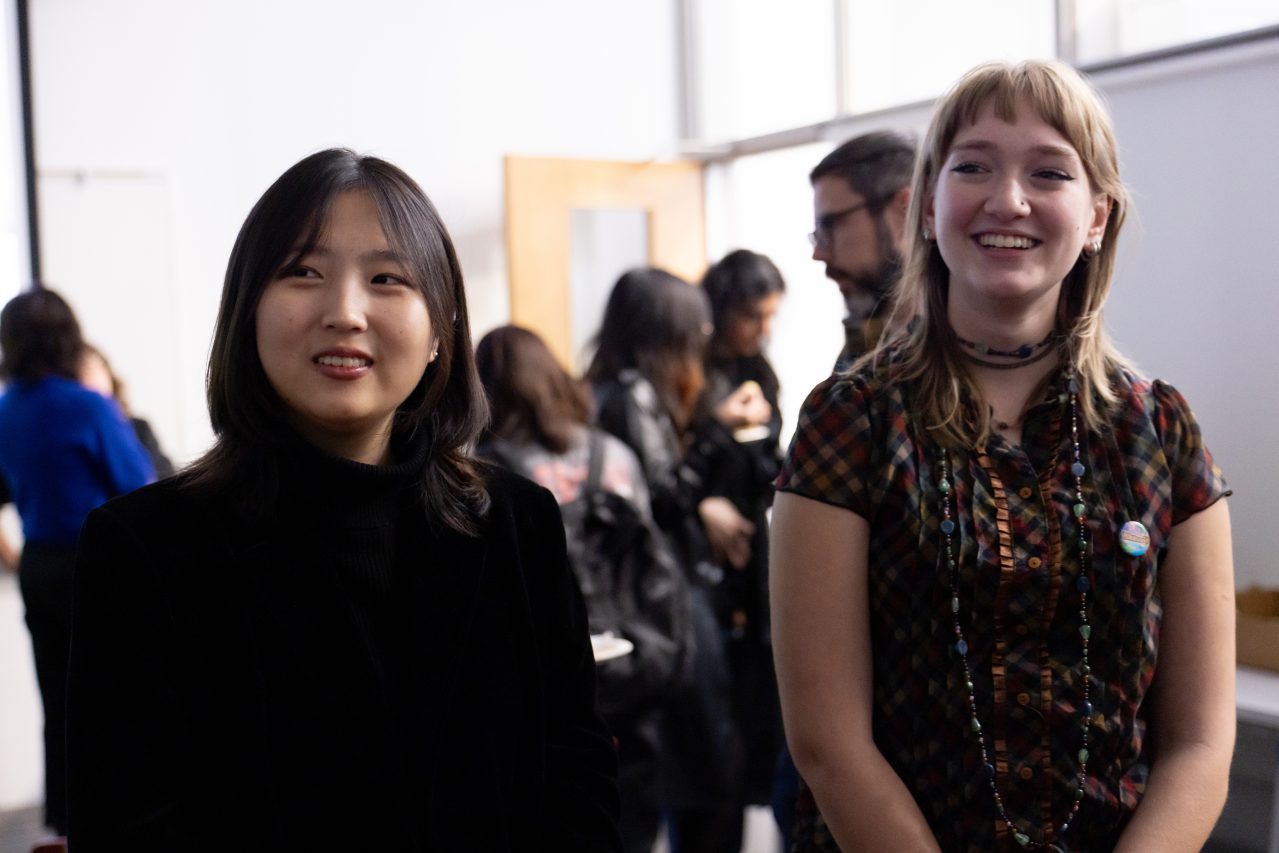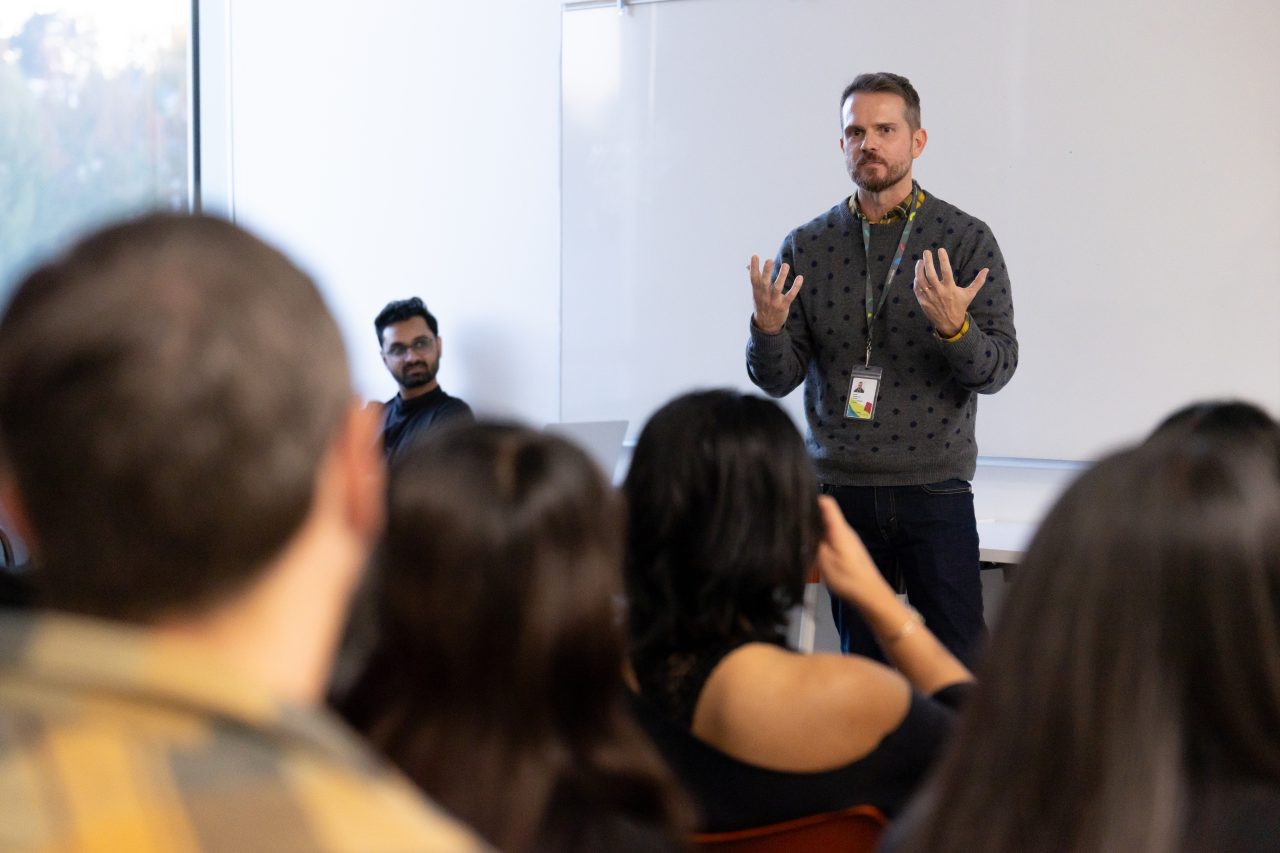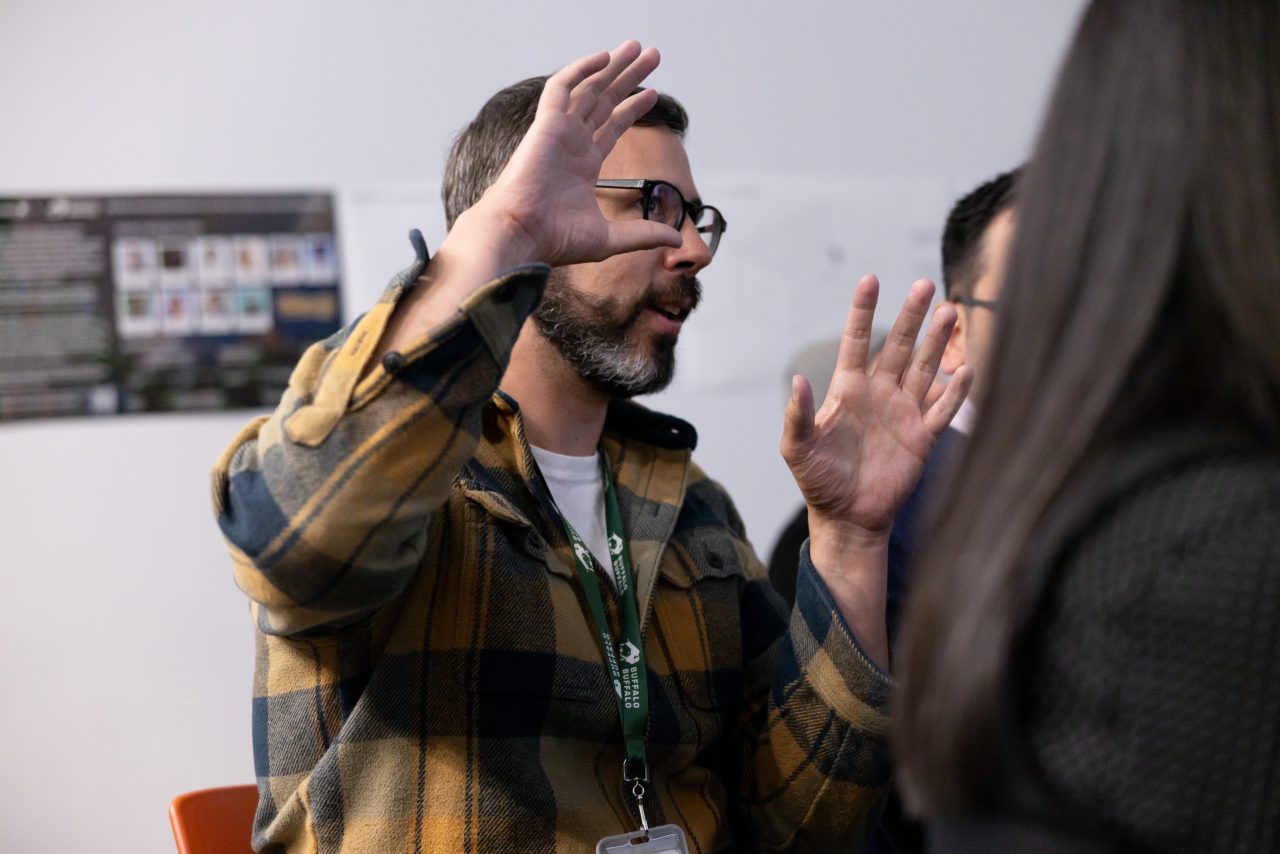ECU Students Create New Insights for VR Gaming Through Collaborative Research Project

ECU students, in attendance at the Birdseed team’s presentation on their project, take the new VR game for a test run. (Photo by Perrin Grauer)
Posted on | Updated
In collaboration with game studio Buffalo Buffalo, Birdseed brought together academia and industry for knowledge exchange and real-time game development.
A new research project in collaboration with Vancouver-based independent game studio Buffalo Buffalo saw students at Emily Carr University of Art + Design (ECU) merge research and theory with professional practice to help develop a new virtual reality (VR) video game.
Student research assistants (RAs) Victoria Korina (BMA 2025), Daeun (Dannie) Kim (BMA 2026) and Hongyu (Harry) Zhang (BMA 2026) worked with faculty to generate new insights into how animation in nature-based VR games can immerse gamers more fully within their virtual experience. Their research was applied directly within the context of Buffalo Buffalo’s newest VR game, Birdseed.
“It was such a great opportunity to build confidence, not just artistically, but socially and professionally as well,” says Victoria, whose work as an animator on Birdseed led to a full-time contract with Buffalo Buffalo.
“I had the chance to work with incredibly talented people who are building a gaming company, and now that I’m developing my portfolio, I can include this experience. It shows not only my contribution to a commercial video game, but also how deeply intertwined the work was with research, which is an important part of my practice.”


Screenshots from Buffalo Buffalo's Birdseed VR. (Courtesy Buffalo Buffalo)
Co-led by ECU faculty member Daniel Wilderberger and Cemre Demiralp, Interim Associate Director, Creative Entrepreneurship, Innovation + External Engagement at ECU, Birdseed: Animating Bird Behaviours to Enhance Immersion in Nature-Based XR Games gave students hands-on work experience developing an industry-standard project in real time and fostered meaningful knowledge exchange between ECU and industry. The project also produced and documented repeatable methods for game production pipelines.
Supporting personnel for the project included ECU faculty member Siddhant Singh and ECU Program Development Officer, Creative Industries + External Engagement, Priyanka Poulose. The Buffalo Buffalo team included creative director Patrick Owens, art director Ken Ha and project manager Charlotte Guan.
Birdseed was generously supported by a Mobilize Grant from the National Sciences and Engineering Research Council (NSERC) College and Community Innovation Program and facilitated by ECU’s Shumka Centre for Creative Entrepreneurship.

Daeun (Dannie) Kim (left) and Victoria Korina chat with colleagues and audience members following a presentation on the work with Buffalo Buffalo. (Photo by Perrin Grauer)
Throughout the summer and fall, student RAs worked through phases including research, pre-visualization, modelling, animation and refinement. They also worked collaboratively to solve creative and technical challenges and contributed their own perspectives to Birdseed’s evolution.
In addition, they drew on the expertise of faculty, technical consultants and Buffalo Buffalo staff to build their understanding of game design, animation, visual design and VR development.
Faculty co-lead Daniel Wildberger says students evolved on numerous fronts throughout the project, including an aptitude for strategic thinking, interpersonal and professional skills, a grounding in the theoretical and historical foundations of virtual gaming, and a deeper understanding of themselves and their goals as creative practitioners.
“We knew the students were super excited to work on this game project and put together a standout portfolio piece. We also knew it might be challenging to ask them to consider a theoretical framework at the same time,” Daniel says.
“But they were super curious and they understood that they had to not only be in the studio and do creative work every day, but operate in different contexts which involve knowledge sharing, critical discussions and strategy — to set up a robust conceptual framework and then build on top of that.
“Those are the good skills for them — understanding game development not only at the studio level, but also starting to ask questions like, why do we work the way we work? How does this project relate to knowledge, theory and histories? That’s a foundation they’ll hopefully bring to future projects, including how they choose where they want to take their careers next.”


(Top): Designer and ECU faculty member Daniel Wildberger chats with an audience about the Birdseed project. | (Bottom): Buffalo Buffalo creative director Patrick Owen responds from the audience. (Photos by Perrin Grauer)
Buffalo Buffalo creative director Patrick Owens says Victoria, Dannie and Harry helped shape Birdseed in crucial ways.
“We’ve worked in the past with students who had backgrounds in design, but when we first started talking with the folks at ECU about this project, we were thinking about the value that might come from a school that also holds space for a vibrant community of artists,” Patrick says.
“From the very beginning, the thing I was most interested in was how birds move, and how elements like camera work and vividness could bring users more deeply into the gaming experience, which are somewhat abstract ideas. And the students did a phenomenal job adapting to our requests. They added their own aesthetic spin and applied their unique skillsets, which became an important part of this project.”
Visit Buffalo Buffalo’s website to learn more about Birdseed and the rest of their innovative games.